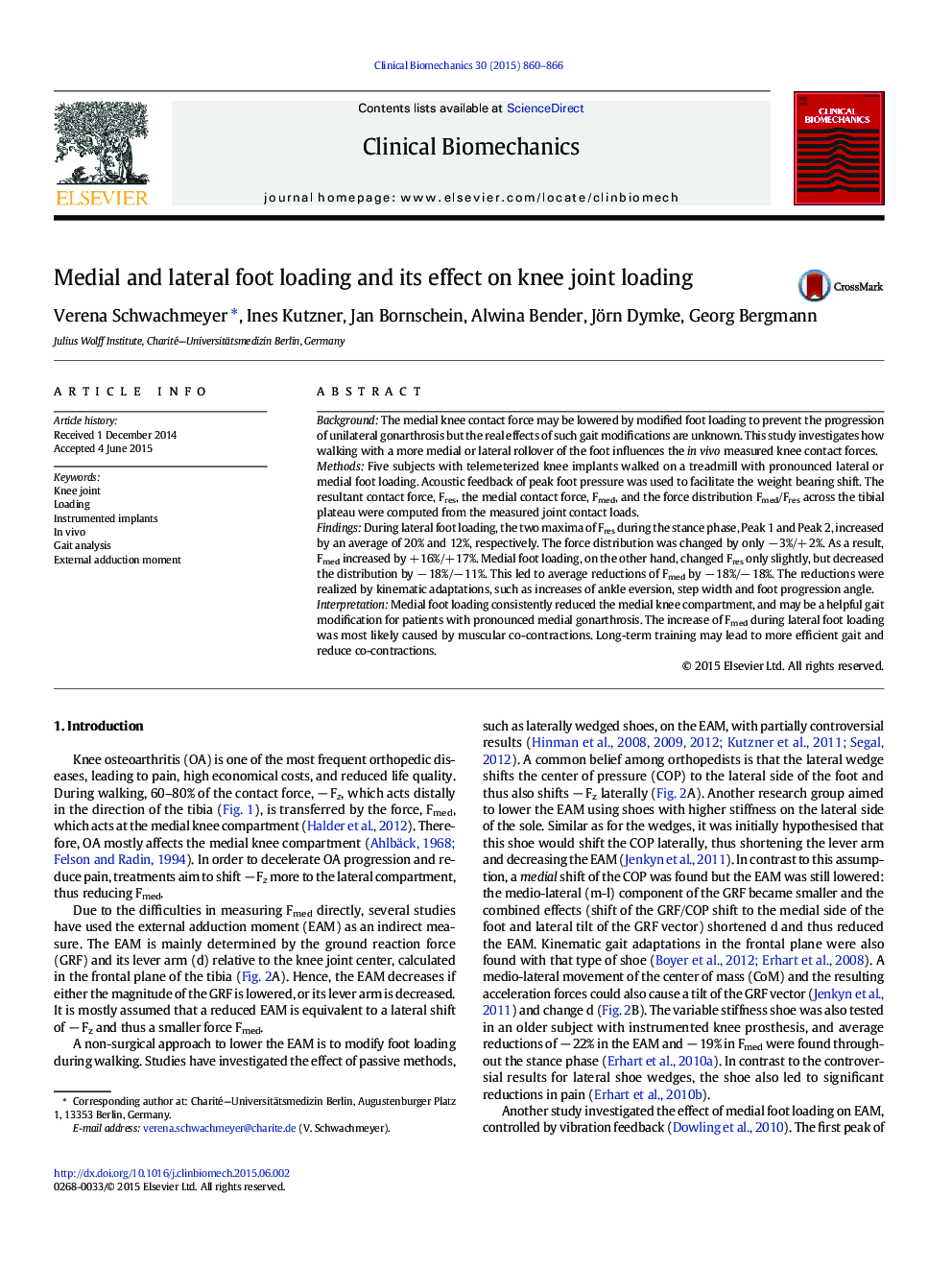| کد مقاله | کد نشریه | سال انتشار | مقاله انگلیسی | نسخه تمام متن |
|---|---|---|---|---|
| 6204699 | 1264910 | 2015 | 7 صفحه PDF | دانلود رایگان |
- Fmed is the combined effect of the total force magnitude and the force distribution.
- Lateral foot loading increased Fmed due to an increase of total force.
- Medial foot loading reduced Fmed due to a force shift to the lateral compartment.
- Subjects achieved altered foot loading with partially diverse kinematic adaptations.
BackgroundThe medial knee contact force may be lowered by modified foot loading to prevent the progression of unilateral gonarthrosis but the real effects of such gait modifications are unknown. This study investigates how walking with a more medial or lateral rollover of the foot influences the in vivo measured knee contact forces.MethodsFive subjects with telemeterized knee implants walked on a treadmill with pronounced lateral or medial foot loading. Acoustic feedback of peak foot pressure was used to facilitate the weight bearing shift. The resultant contact force, Fres, the medial contact force, Fmed, and the force distribution Fmed/Fres across the tibial plateau were computed from the measured joint contact loads.FindingsDuring lateral foot loading, the two maxima of Fres during the stance phase, Peak 1 and Peak 2, increased by an average of 20% and 12%, respectively. The force distribution was changed by only â 3%/+ 2%. As a result, Fmed increased by + 16%/+ 17%. Medial foot loading, on the other hand, changed Fres only slightly, but decreased the distribution by â 18%/â 11%. This led to average reductions of Fmed by â 18%/â 18%. The reductions were realized by kinematic adaptations, such as increases of ankle eversion, step width and foot progression angle.InterpretationMedial foot loading consistently reduced the medial knee compartment, and may be a helpful gait modification for patients with pronounced medial gonarthrosis. The increase of Fmed during lateral foot loading was most likely caused by muscular co-contractions. Long-term training may lead to more efficient gait and reduce co-contractions.
Journal: Clinical Biomechanics - Volume 30, Issue 8, October 2015, Pages 860-866
